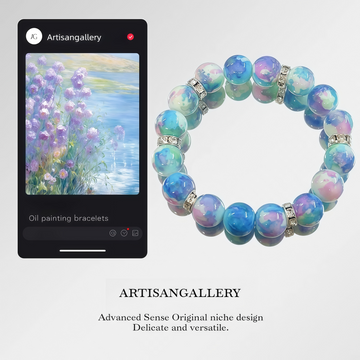Developing a Long-Term Maintenance Plan for Stone Bangles
Stone bangles, crafted from natural materials like jade, agate, or quartz, require strategic long-term care to preserve their beauty, structural integrity, and cultural significance. A well-structured maintenance plan combines routine checks, environmental controls, and periodic professional assessments to address wear, prevent damage, and extend the lifespan of these heirlooms. By tailoring actions to the stone’s properties and usage patterns, owners can ensure their bangles remain vibrant for generations.
Establishing a Routine Inspection Schedule
Consistency is key to catching issues early. Create a monthly inspection routine to evaluate the bangle’s condition under natural light. Focus on surface details like scratches, chips, or discoloration, which may indicate exposure to abrasive substances or UV rays. For porous stones like turquoise, check for moisture absorption, which can cause swelling or cracking. Use a magnifying glass to examine engravings or settings for signs of loosening, particularly if the bangle features metal accents or inlays.
In addition to monthly checks, perform a quick visual assessment after each wear. Look for residue from lotions, perfumes, or sweat, which can accumulate in crevices and lead to corrosion or staining. Wiping the bangle with a soft, dry cloth after use removes these contaminants before they cause lasting harm. For bangles stored in shared jewelry boxes, inspect them quarterly for scratches from contact with harder materials, adjusting storage methods as needed.
Creating an Environment-Controlled Storage System
Environmental factors like humidity, temperature, and light exposure significantly impact a stone bangle’s longevity. Designate a cool, dry storage space away from direct sunlight, as prolonged UV exposure can fade colors and weaken structural bonds. Use breathable storage pouches made of cotton or velvet to cushion the bangle and reduce friction against other jewelry. For long-term storage, place the pouch inside a rigid box lined with acid-free tissue paper to protect against dust and moisture.
Avoid storing bangles in airtight containers or plastic bags, as trapped humidity can encourage mold growth or chemical reactions with the stone. In humid climates, include silica gel packets (not in direct contact with the bangle) to absorb excess moisture. If displaying the bangle, use a shadow box with UV-filtering glass to block harmful light while allowing airflow. For bangles with adjustable cords or knots, store them flat to prevent stretching or warping over time.
Scheduling Periodic Professional Assessments
While routine care can address minor issues, professional evaluations are essential for detecting hidden problems or performing specialized treatments. Plan an annual visit to a jeweler or conservator experienced in working with natural stones. These experts can use magnification tools or non-invasive testing to identify internal fractures, adhesive degradation, or subtle color shifts invisible to the naked eye. They may also recommend treatments like re-polishing, re-setting loose components, or applying protective coatings tailored to the stone’s needs.
For bangles with cultural or historical significance, consult a conservation specialist to ensure maintenance aligns with ethical preservation standards. They can advise on reversible treatments that respect the bangle’s authenticity while enhancing its stability. Document each professional assessment, noting the date, findings, and recommended actions, to create a historical record of the bangle’s care and track its condition over time.
Adapting the Plan to Lifestyle and Usage Patterns
A static maintenance plan may overlook unique risks tied to how the bangle is worn or handled. If the owner frequently participates in activities like gardening, cooking, or sports, increase post-wear inspections to check for impact damage or chemical exposure. For bangles passed down through generations, research historical repair methods to avoid modern interventions that might clash with traditional aesthetics.
Consider seasonal adjustments, such as storing the bangle in a dehumidified environment during rainy seasons or avoiding outdoor displays in areas with high pollution. If the bangle is part of a larger collection, rotate its usage to minimize wear and tear. By aligning the maintenance plan with real-world conditions, owners can address risks proactively without compromising the bangle’s usability or cultural value.
A long-term maintenance plan for stone bangles transforms routine care into a deliberate act of preservation. By combining regular inspections, controlled storage, professional expertise, and lifestyle adaptability, owners safeguard these artifacts against both everyday wear and the passage of time, ensuring they endure as symbols of heritage and craftsmanship.







